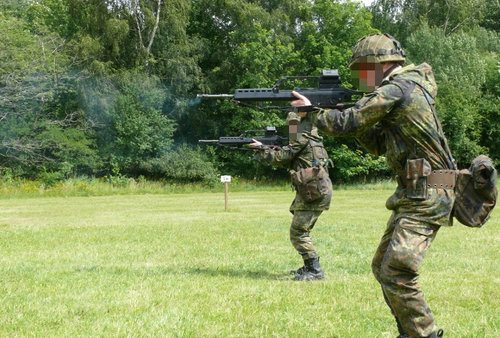The Universal Combat Stance – Part 1.
This article is the first in a series of articles about different combat stances. One of Project Gecko staff members with extended experience in the field of tactical fitness and physiotherapy.
Recently during one of PG shooting courses, I heard several students arguing about whether a tactic or a shooting stance should be 100% universal or on the other hand a purpose designated (CQB / LR context for example) stance that might not be 100% universal but more human behavior compliant and flexible.
Back to the students argument.
I asked the student: “What does a universal stance mean for you?“
He replied that the stance can be used in a firefight, hand to hand combat , in close quarter or on 200m range. In a few words? Something that is legit for every task, doesn´t matter how different the context might be.
This sounds really efficient and simple in the first place right? It left me thinking about it alot, because each fight has different priorities so the stance also has different tasks to fulfill. Nevertheless, the utilization of Tactic, Terrain & Equipment plays a major role in our ability to do A, B, C…. As a small example you can ask a kitchen chef if, “Are you using only one knife to prepare the food?” The answer is clearly no, because every meat is different.
So is fighting.
So for those who want a short summary. There is no universal combat stance, merely differences that are normally dictated by the designation of your task. Lets look into some fundamentals and principles.
Stability equals tight grouping right?
When you ask the average shooter why the shooting stance is so important, he will typically roll up his eyes and will say : “Tight grouping bro.” Not so correct.
A shooting stance, or let’s be more accurate, a combat stance, is a stance that allows you not only to be relevant to the application of action itself (shooting /punching for example), but also to what is going to happen straight after you make the decision to pull the trigger or deliver a blow with your fist. The combat stance should be one fluid movement that will allow you to remain proactive and responsive. In reality, human targets are extremely dynamic.
One of the most important characteristics of the combat stance is mobility. But what is meant with mobility?
Mobility.
Mobility equals survivability. One of the key components in a combat stance is applying a body posture that will allow a default behavior compliant of different parts of the body for a dynamic mobility. Majority of combat stances, like the German NSAK, are quite good for shooting, but terrible for rapid reactionary body mechanics such as moving away from the shooting tunnel instead of moving into it. Compared to the modified IDF combat stance that we teach in Project Gecko, there is a huge difference in the leg position. Through the different leg position we achieve the following advantages.


1. On demand – In other words – it has to be simple but effective that the individual could employ the body posture literally on demand as a behavioral default.
2.Proactive – In most cases entering a combat stance is done in a reactive manner, as the need for the stance obviously is triggered by something. But by being proactive for example you can say this: The initial posture in the modified Israeli combat stance nearly forces the shooter into moving (not only stepping like NSAK) sideways rather than in a linear manner towards his threat (which increases fatality chances drastically).
3. Human behavior compliant – We get to this point later.
The modified Israeli combat stance demonstrated by a student. Note the muscles suspension, torso, and shoulders.

Through the physiology of the muscles we know that the leg muscles create more energy when they get slightly stretched. So similar to a sprinter getting ready at his/her starting block, we also get into a slightly bended knee position to provide optimal conditions.Now after we talked about getting into optimal conditions we also need to talk about how to hold them.
In the next article, we will discuss the economic use of energy & the bio mechanics in play.
Thanks for reading,
G.
Project Gecko is a company which specializes in the field of Tactical Training & consultant services. Their capabilities ranges from setting up Tactical courses & projects to consultant services. During their courses Gecko instructors give their participants the mental and physical tools for their personal success.
They offer a wide spectrum of programs that take place in one day classes, three-days-seminars, and events up to one week. All those programs are based and created on their knowledge which they unpack and repack in a way that will suit every participant. For Gecko the gear is just a tool and the will is the key. Gecko believes that every person who has the will, will find his place in their seminars and workshops.
The instructors behind Project Gecko are all former military personal with extended training’s and combat experience. Eliran founder of Project Gecko was born in Israel. Before he moved to Germany he served in the IDF in one of the SF units.
Find out more about Project Gecko


